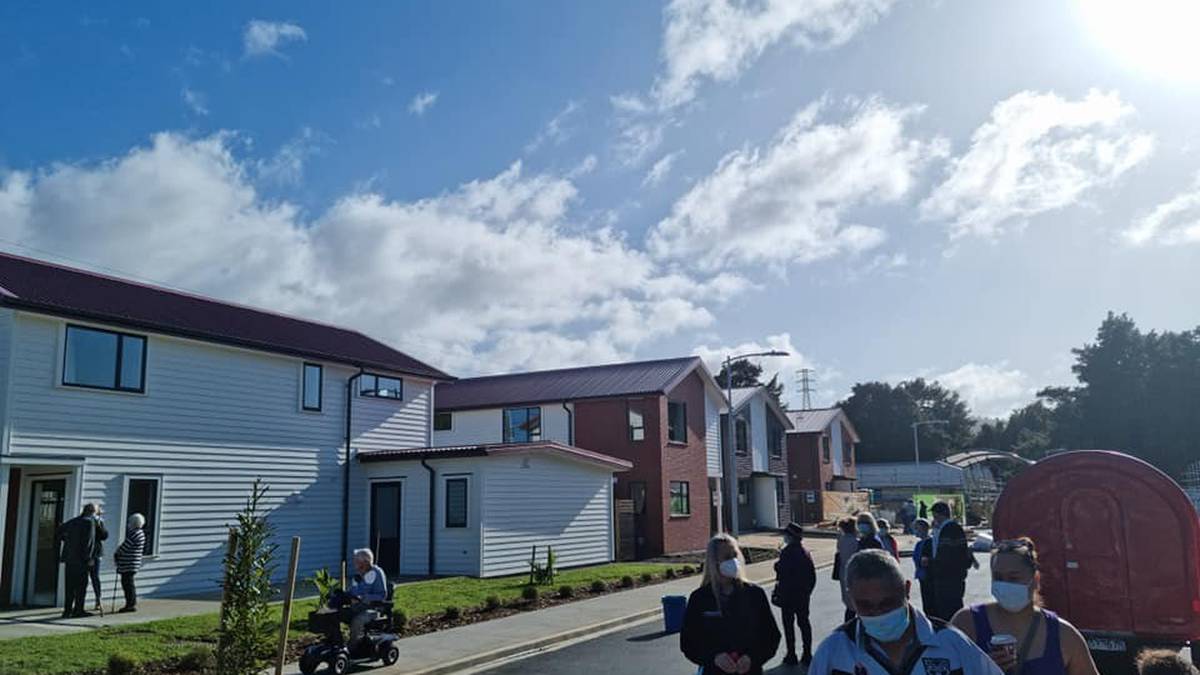The new public homes at Puriri Park in Whangārei. Photo / Emily Henderson
OPINION
You don’t have to go far back in most Kiwi families (including mine) to find a state house which provided the basis for their future.
You also don’t have to wander far in Whangārei to see the impacts of not having a secure home base: insecure and poor-quality housing is a major contributor to poor health and intergenerational poverty.
In my book, every Kiwi deserves a healthy and affordable place to call home, and I strongly believe that Government has a responsibility to provide a safety net to people who need public housing for that base.
All else aside, providing social housing makes good economic sense: people in good housing have better stability, better health and educational outcomes, better employment records, and commit fewer criminal offences.
In Whangārei, unfortunately, as throughout New Zealand, over the last several decades there haven’t been enough social houses built.
Over their nine years in office, the last government built only five new houses in Whangārei, and the result of that failure is the distress we see every week in our office, as families come in needing housing which simply doesn’t exist.
/cloudfront-ap-southeast-2.images.arcpublishing.com/nzme/FABMPCL7QNWSKOYHP5AW35ZWQ4.jpg)
I make no apologies for being outraged by this. However, the tide has now turned.
This Government has made Northland a housing priority area, and over the last five years, between Kāinga Ora and partnering with social housing providers, we have added 166 houses to Whangārei’s stock, with over twice that number in the pipeline.
It was wonderful recently to welcome the first families into our Puriri Park development, which will bring 37 new homes to Whangārei by the end of this year.
Meanwhile, we’re building homes in Kamo, Morningside, Onerahi and Tikipunga, and working on plans for more in Ruakākā and elsewhere.
This is part of a much wider movement. As a government, we’re now in the midst of the biggest social house-building programme since the 1970s.
It is worth noting that if National had built public housing at this rate, we’d now have nearly 23,000 new state houses, housing about 94 per cent of everyone on the current waiting list.
Central Government cannot salvage the situation alone, however, and without a progressive council, progress is difficult.
I’m grateful for councillors like long-time social advocate Carol Peters, who, with Ken Couper and Gavin Benney, set up the social housing subcommittee to remove the barriers to development. Their work makes a significant difference.
Meanwhile, as Government, we’re modernising the country’s 30-year-old building consent system, which will help us continue to transform the housing market, unlock productivity growth, stimulate urban development where it is needed, and make homes more affordable for all.
As well as social housing, we’ve made it easier for first-home buyers by lifting price caps for First Home Grants, and removing price caps entirely from the First Home Loan.
We’ve also discouraged property speculation by extending the bright-line test from five years to 10 years and closing a long-standing tax loophole benefitting property speculators, giving first-home buyers more options.
It can’t happen overnight and there is much more to do, but we’re on our way to seeing more Whangarei families into homes that will give them a secure start and help our community find a more secure, prosperous future.




